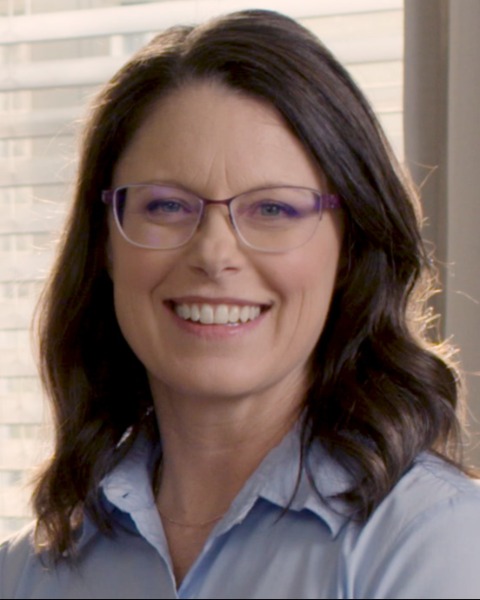Back
Research Report
Platform Presentations: Session 2
THERAPEUTIC PLAY GYM: FEASIBILITY OF A CAREGIVER-MEDIATED EXERCISE SYSTEM FOR CHILDREN WITH NEUROMUSCULAR WEAKNESS
Sunday, October 29, 2023
11:30 AM – 11:45 AM CST
Location: Room 207, 2nd Floor, CHI Convention Center
Purpose/Hypothesis: During the pandemic caregivers reported loss of pediatric rehabilitation services and asked for help with home exercises. This plea triggered the development of a novel Therapeutic Play Gym (TPG) and study to assess the safety and feasibility of caregiver-mediated home exercise training. A 1x/month consultative therapy model was used for 6 months, followed by a 12-month extension study without monthly consultation. The team hypothesized that outcomes related to fitness, function, and caregiver-reported quality of life may inform future research and product design.
Number of Subjects: Nine children, age five months to five years and their caregivers enrolled in the study. Childhood diagnoses included treated Spinal Muscular Atrophy (SMA) Type 0 and SMA Type I , untreated X-Linked Myotubular Myopathy (XLMTM) and Nemaline Rod Muscular Dystrophy. No child could lift their head in prone, roll, or sit independently at baseline. Six children were ventilator and gastrostomy-tube dependent.
Materials/Methods: Outcomes for this mixed-methods study included: Neuromuscular Gross Motor Outcome (GRO), FUNctional Measure (FUNM)-an exploratory training-specific outcome, range of motion (ROM), degree of scoliosis curvature, exploratory Caregiver Impression of Change Questionnaire (CICQ), and an end of study interview. Nine child-caregiver dyads completed the feasibility study with testing at baseline (BL), Month 3, and Month 6. Months 1, 2, 4, and 5 were either an in-person visit or a Zoom visit. Eight dyads enrolled in a long-term extension (LTE) study starting in June 2022. Seven dyads are scheduled to complete final testing and interviews during June-August of 2023.
Results: At Month 12 each child completed 8 consultative visits comprised of safety checks, caregiver education, training progression, documentation of adverse events, training logs, and functional testing. After 50,000 training minutes (833 hours) there were zero device or training-related adverse events. However, this medically complex cohort accrued 88 adverse events (infections, hospitalizations, disuse fractures, family relocations, caregiver overuse injury, loss of home nursing) and one SAE. Caregivers reported fitness gains including: improved sleep and mood, strength gains, vent weaning, improved breathing volumes, longer periods of play, improved endurance. Functional gains included: GRO baseline to 12 months (p=0.0156), and FUNM (function while not in TPG compared to function while in TPG) p=0.0087. Caregiver Impression of Change over 12 months was p= 0.0078. Scoliosis and ROM data is inconclusive at 12-months, more testing timepoints are required.
Conclusions: The 12-month results demonstrated caregiver-mediated home training was safe, feasible, and had an effect on fitness, function, and caregiver-reported quality of life. The LTE study will end this summer and statistical analysis will be completed before the APTA Pediatric Annual Conference.
Clinical Relevance: Due to growing numbers of underserved children post-pandemic, pediatric therapists need new care models to provide accessible affordable care. These feasibility study results may inform TPG research in other settings and populations.
Number of Subjects: Nine children, age five months to five years and their caregivers enrolled in the study. Childhood diagnoses included treated Spinal Muscular Atrophy (SMA) Type 0 and SMA Type I , untreated X-Linked Myotubular Myopathy (XLMTM) and Nemaline Rod Muscular Dystrophy. No child could lift their head in prone, roll, or sit independently at baseline. Six children were ventilator and gastrostomy-tube dependent.
Materials/Methods: Outcomes for this mixed-methods study included: Neuromuscular Gross Motor Outcome (GRO), FUNctional Measure (FUNM)-an exploratory training-specific outcome, range of motion (ROM), degree of scoliosis curvature, exploratory Caregiver Impression of Change Questionnaire (CICQ), and an end of study interview. Nine child-caregiver dyads completed the feasibility study with testing at baseline (BL), Month 3, and Month 6. Months 1, 2, 4, and 5 were either an in-person visit or a Zoom visit. Eight dyads enrolled in a long-term extension (LTE) study starting in June 2022. Seven dyads are scheduled to complete final testing and interviews during June-August of 2023.
Results: At Month 12 each child completed 8 consultative visits comprised of safety checks, caregiver education, training progression, documentation of adverse events, training logs, and functional testing. After 50,000 training minutes (833 hours) there were zero device or training-related adverse events. However, this medically complex cohort accrued 88 adverse events (infections, hospitalizations, disuse fractures, family relocations, caregiver overuse injury, loss of home nursing) and one SAE. Caregivers reported fitness gains including: improved sleep and mood, strength gains, vent weaning, improved breathing volumes, longer periods of play, improved endurance. Functional gains included: GRO baseline to 12 months (p=0.0156), and FUNM (function while not in TPG compared to function while in TPG) p=0.0087. Caregiver Impression of Change over 12 months was p= 0.0078. Scoliosis and ROM data is inconclusive at 12-months, more testing timepoints are required.
Conclusions: The 12-month results demonstrated caregiver-mediated home training was safe, feasible, and had an effect on fitness, function, and caregiver-reported quality of life. The LTE study will end this summer and statistical analysis will be completed before the APTA Pediatric Annual Conference.
Clinical Relevance: Due to growing numbers of underserved children post-pandemic, pediatric therapists need new care models to provide accessible affordable care. These feasibility study results may inform TPG research in other settings and populations.

Jenna L. Lammers, PT, MSR, CNT, PCS (she/her/hers)
Research Physical Therapist
University of Florida- Powell Center for Rare Disease Research and Therapy
Gainesville, Florida

.png)
.png)
.png)
.png)
.png)
.png)
.png)